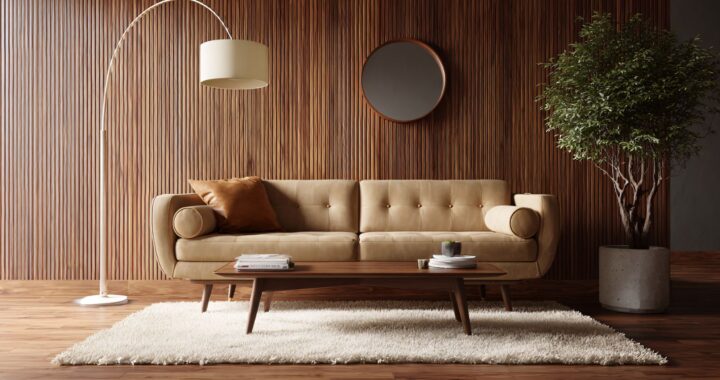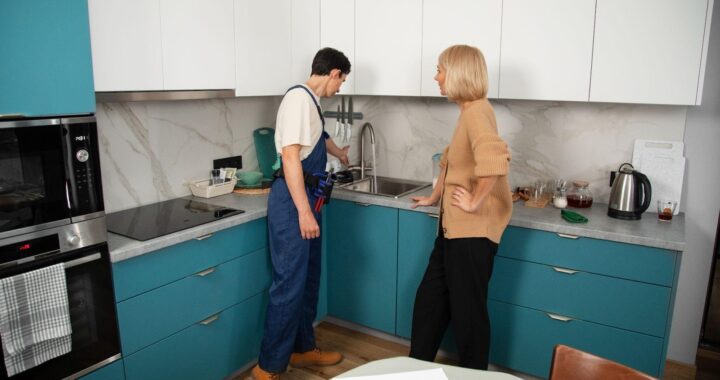Minimalist Rooms with Maximum Impact: Design Tips That Work

In the world of home design, the words “minimalist” and “maximum impact” are clearly opposite concepts. Or at least that’s what many have been led to believe. All too often, homeowners fall victim to strict rules and guidelines, believing they need to stick to what the supposed experts say. Sure, there are some basic tips and guidelines that help, but home design is all about personalising your space. That means not being afraid to colour outside the lines and trust your creative instincts.
Here we’ll take a look at some practical ways you can create maximum design impact in minimalist rooms. These two design concepts can not only co-exist—they often complement each other beautifully.
Take Advantage of Natural Light Whenever Possible
Few things have as much of an impact on interior design as natural light. Sunlight can make a space feel brighter, bigger, and more open, welcoming, and modern. This is exactly why any home décor expert will tell you to take advantage of it whenever possible.
Some simple tips you can use include:
- Don’t put furniture in front of a window. You don’t want to block the light from pouring in.
- Don’t use heavy, dark window coverings. Opt for sheer curtains or light coloured blinds.
- Do make the window a focal point in the room.
- Do hang a mirror on the opposite wall of the window. This will create an illusion of added space and enhance the brightness by reflecting sunlight.
Don’t Overlook the Impact of Purposeful Artificial Lighting
Whether you’ve got windows in the room or not, you’re still going to need artificial lighting. Why not challenge yourself to look at lighting in a new way? Think of it as purposeful artificial lighting. This means you give thought to where you place the artificial light, how it will be used, and what kind of fixture fits best.
A few popular types of artificial light fixtures include track lighting, desk lamps, floor lamps, wall sconces, recessed lighting, chandeliers, and pendant lighting. Each fixture fits into one of three categories: ambient, accent, or task lighting.
The final lighting tip is to vary the types of fixtures you use from room to room. Each space is used differently, and the lighting needs to reflect this fact.
Be Mindful of the Colour Palette
Another impactful design choice you’ll need to make is choosing what colour(s) to use in your home. Rather than focusing on what colours are trending, think about how the colour will work in your space.
You will likely want to use your existing furniture, flooring, trim, and cabinetry. This means the colour palette has to complement those elements. It’s important to note the word complement here—not match. You don’t want everything the exact same shade because that creates no interest whatsoever.
Neutral colour palettes are the easiest to work with, but they don’t exactly scream “maximum impact.” The way around this issue is to add pops of colour through décor and design pieces. You could add a brightly coloured area rug, throw blankets, throw pillows, modern artwork, and more.
Homeowners who are drawn to brighter, bolder colours shouldn’t have to make a sacrifice. Instead, use the colour strategically. You could paint a bold accent wall. Or, if you’re feeling adventurous, go bold on every wall—just balance it out with neutral furniture and décor.
Embrace Technology and Smart Home Devices
There is a lot of focus on individual décor elements in interior design. Each piece is meant to add to the space. If you’re not careful, however, it can be too much happening and come off cluttered. It can be hard to figure out how a minimalist space can also function in a way that offers maximum benefits. Look no further than technology and smart devices to achieve this goal.
Many minimalist homeowners now design their spaces to accommodate flexible tech use. This can include items like mobile workstations, smart devices, home security devices, and compact entertainment corners. Ideally, the technology pieces themselves should blend into the place. You don’t want them to stick out and take away from the clean lines and organised space.
Don’t Shy Away from Mixing Different Textures and Prints
An interior design trick that professionals are quick to use is mixing textures and prints. This creates a sense of interest and can help you bring a design concept together. Homeowners can feel a bit intimidated by this technique, as it’s not exactly black and white in terms of what works together.
A simple way to embrace this tip is to choose items that use a similar motif, colour palette, time period, or type of style. For example, a modern geometric printed area rug can do wonders in a space. Just pick a rug that has the same colours as the furniture and wall paint, and it will blend beautifully.
Furniture is another way to mix textures and prints. You can use different fabrics for each piece, then select one with a pattern. The pattern will pop and become a central part of the design.
Functional Storage Space Will Help Keep the Space Uncluttered
One defining characteristic of minimalist spaces is that every item has its place. There’s no clutter or mess—everything appears organised. This can’t be achieved without adequate functional storage space. You can use traditional storage such as shelving and cupboards, as well as hidden storage.
Many furniture pieces have built-in storage nowadays. Some examples include drawers built into the bottom of a bedframe, coffee tables that lift up and reveal hidden storage compartments, footstools with a seat that lifts off for storage, and storage built under the stairs.
If you invest in functional storage pieces and still find there are random items without a proper spot, then it’s time for a proper declutter.
Being a Minimalist Doesn’t Mean Sacrificing on Style and Function
As each of these design tips has proven, being a minimalist doesn’t mean your house has to look boring or not trendy. In fact, when you use design tricks that create maximum impact, you’ll create something that is not only unique but also stylish. This is your chance to be creative and look for inspiration that speaks to you.
Some people even apply the minimalist philosophy in other areas of their life. Whether deleting people on social media you haven’t spoken to in a decade or swapping your video game consoles for mobile-friendly entertainment options such as casinos that allow pay-by-phone access, having less clutter means you can focus more on the things that truly matter.


 Blending Styles: Decorating with a Modern Round Rug and Warehouse Rugs for Living Room Interiors
Blending Styles: Decorating with a Modern Round Rug and Warehouse Rugs for Living Room Interiors  Pre-Built vs Custom Kitchens: What’s Best for Your Home?
Pre-Built vs Custom Kitchens: What’s Best for Your Home?  Five Refreshing Ways to Decorate and Revitalise Your Bathroom
Five Refreshing Ways to Decorate and Revitalise Your Bathroom